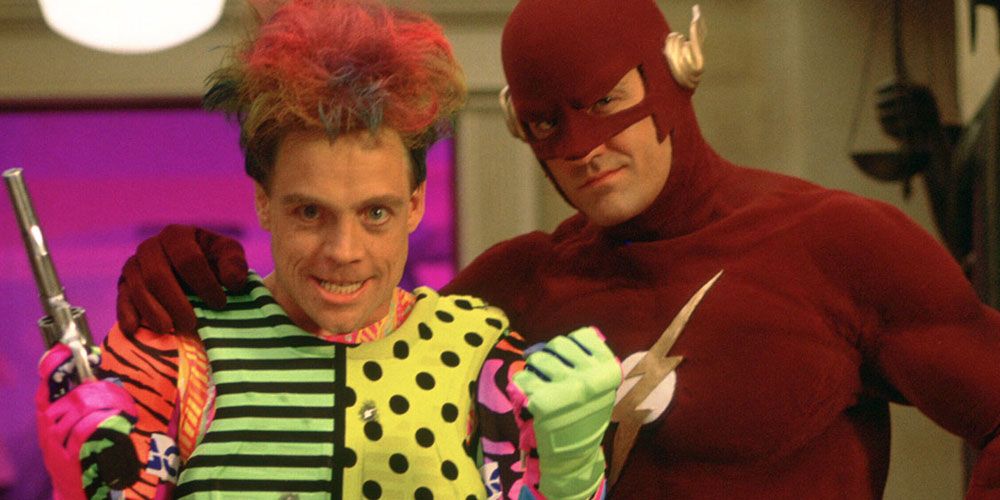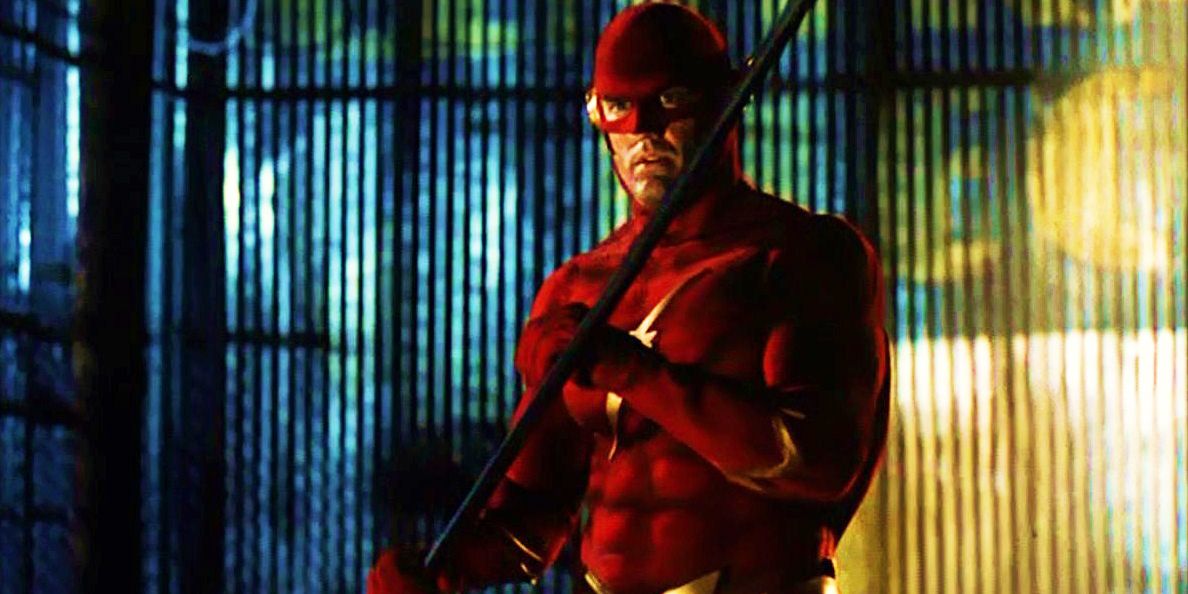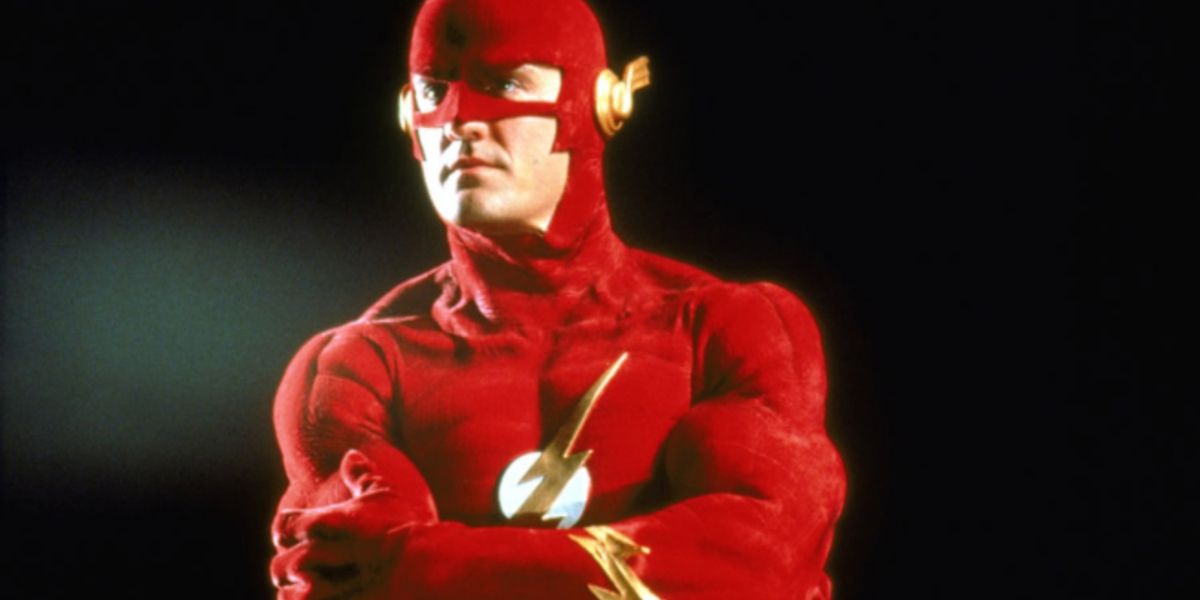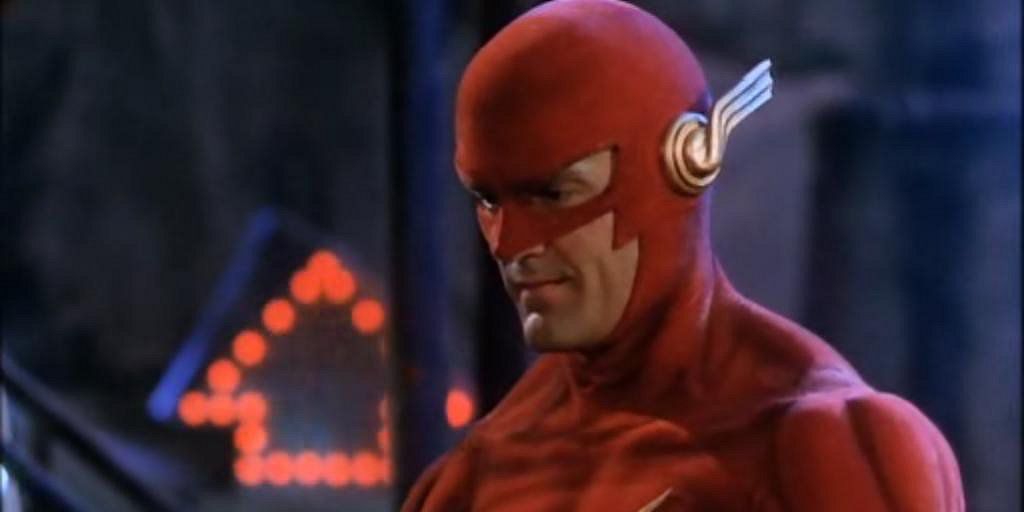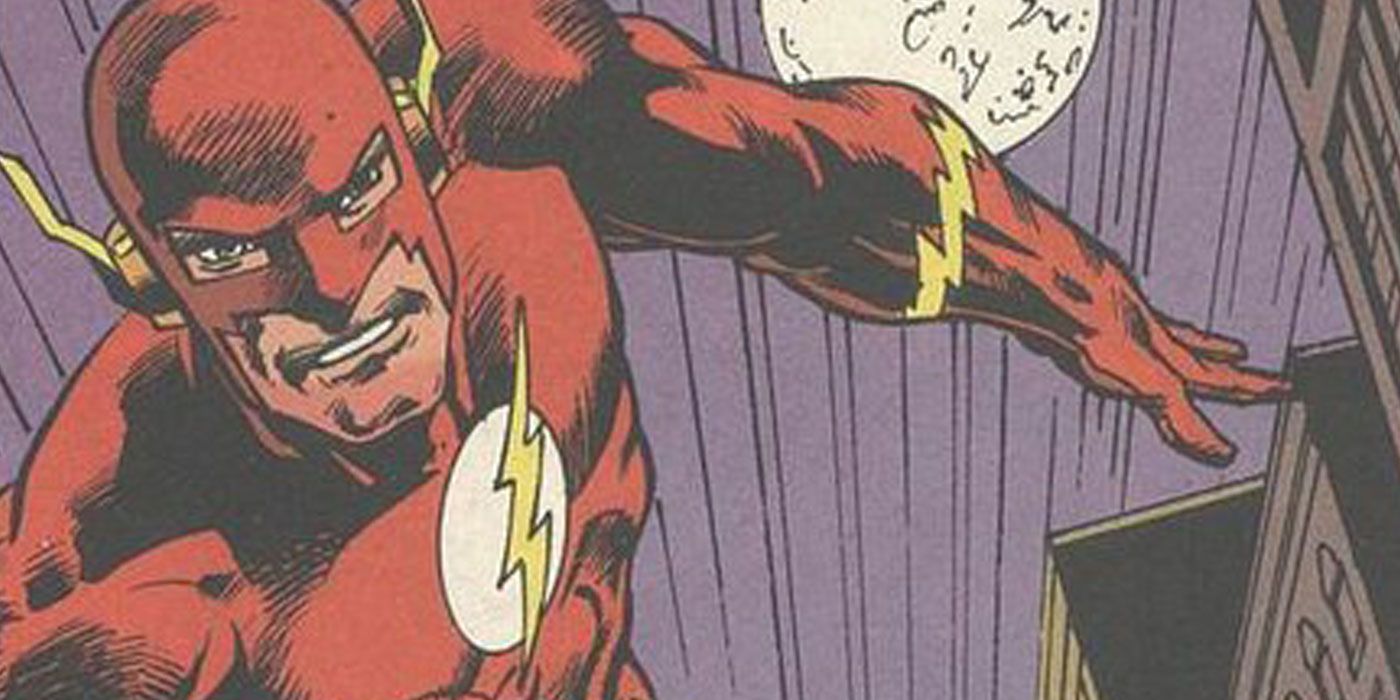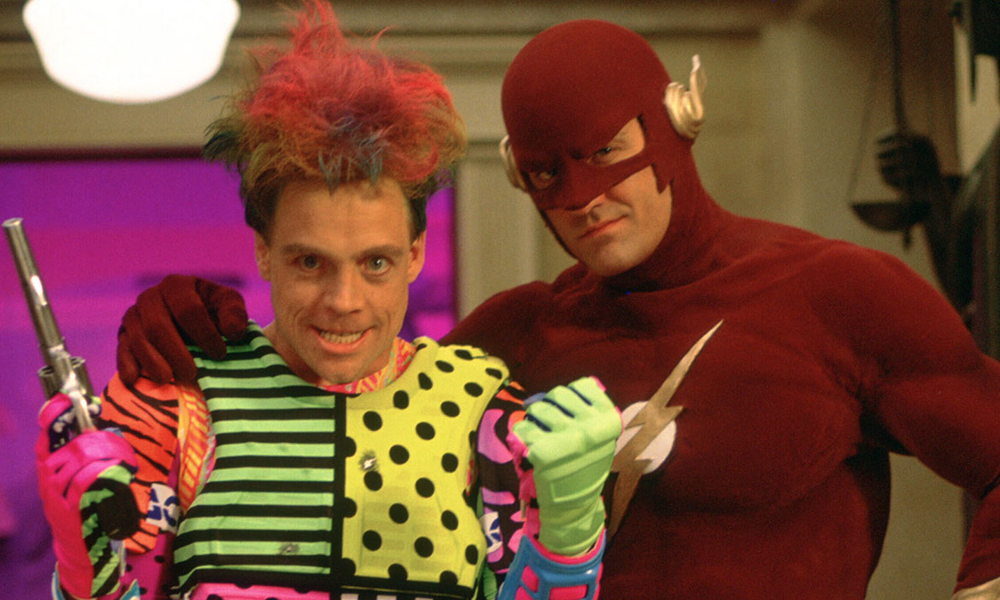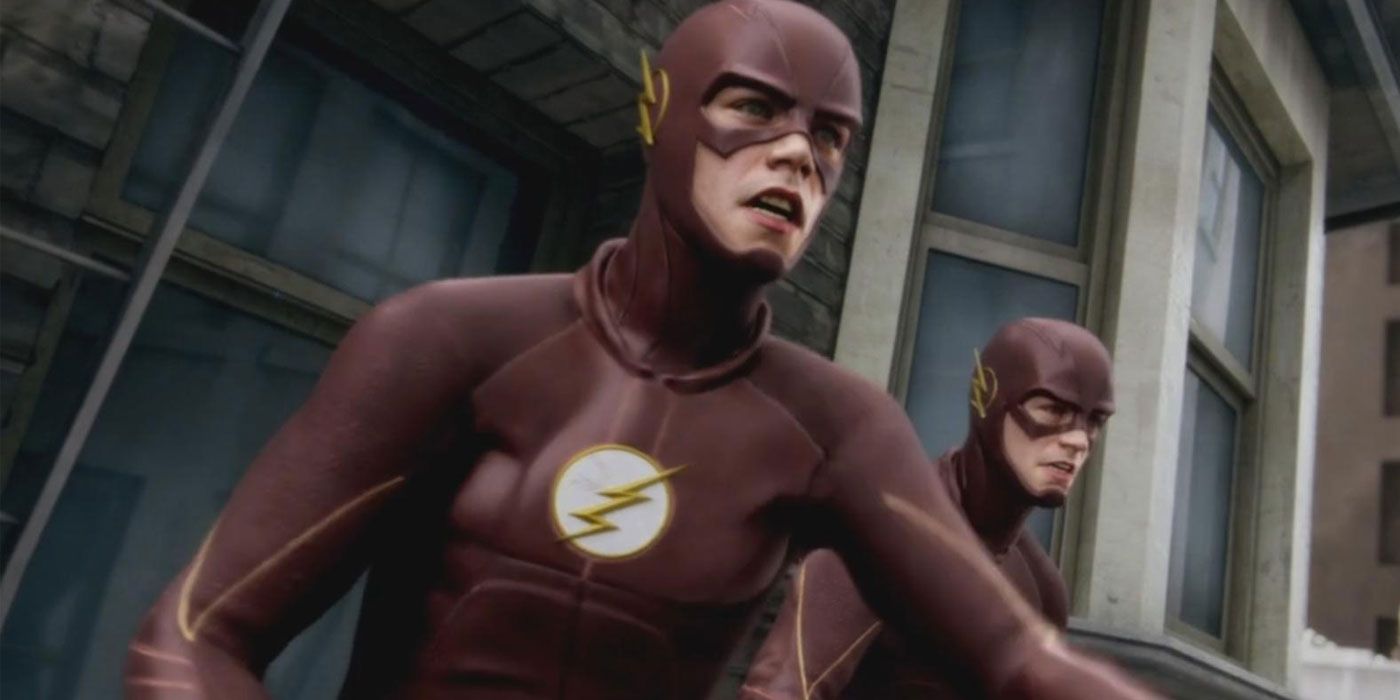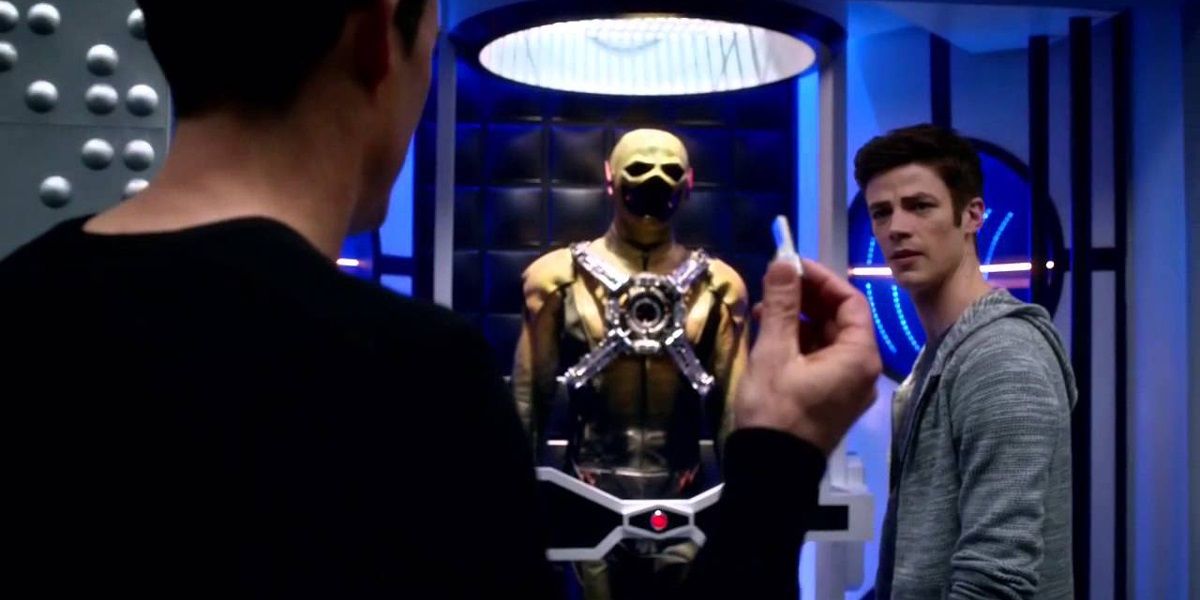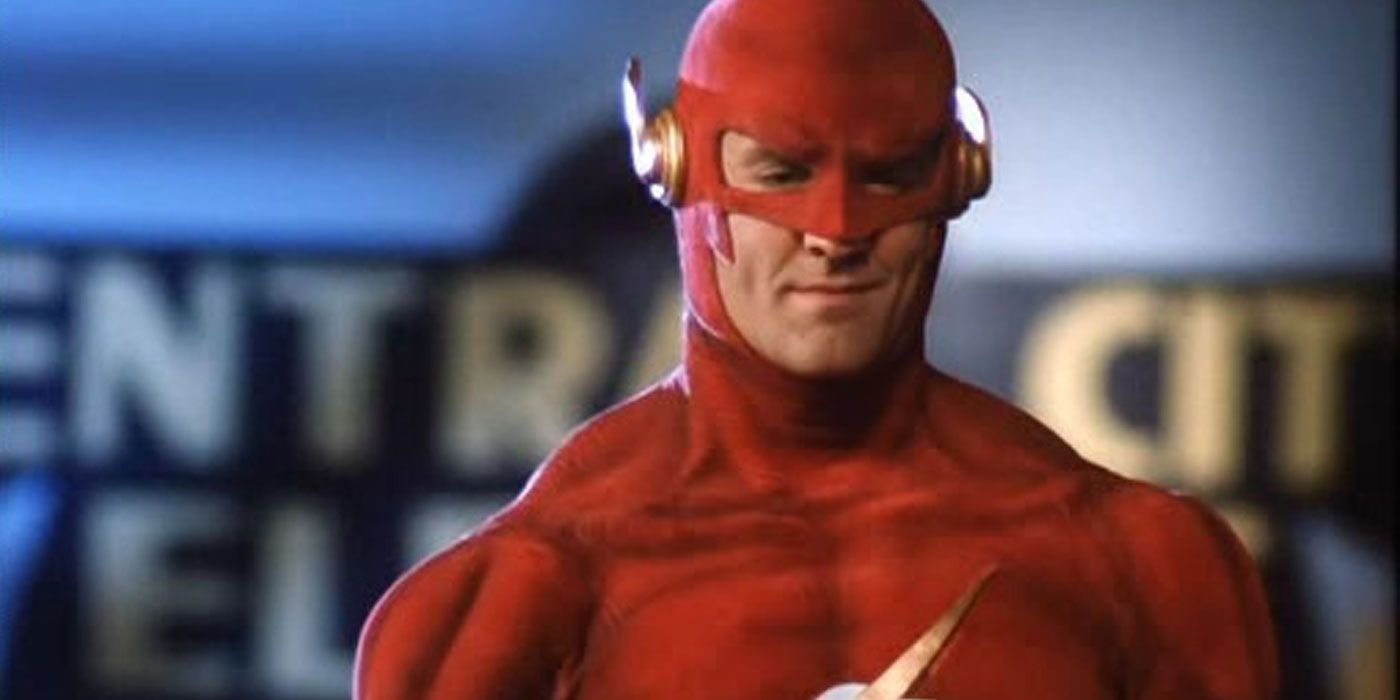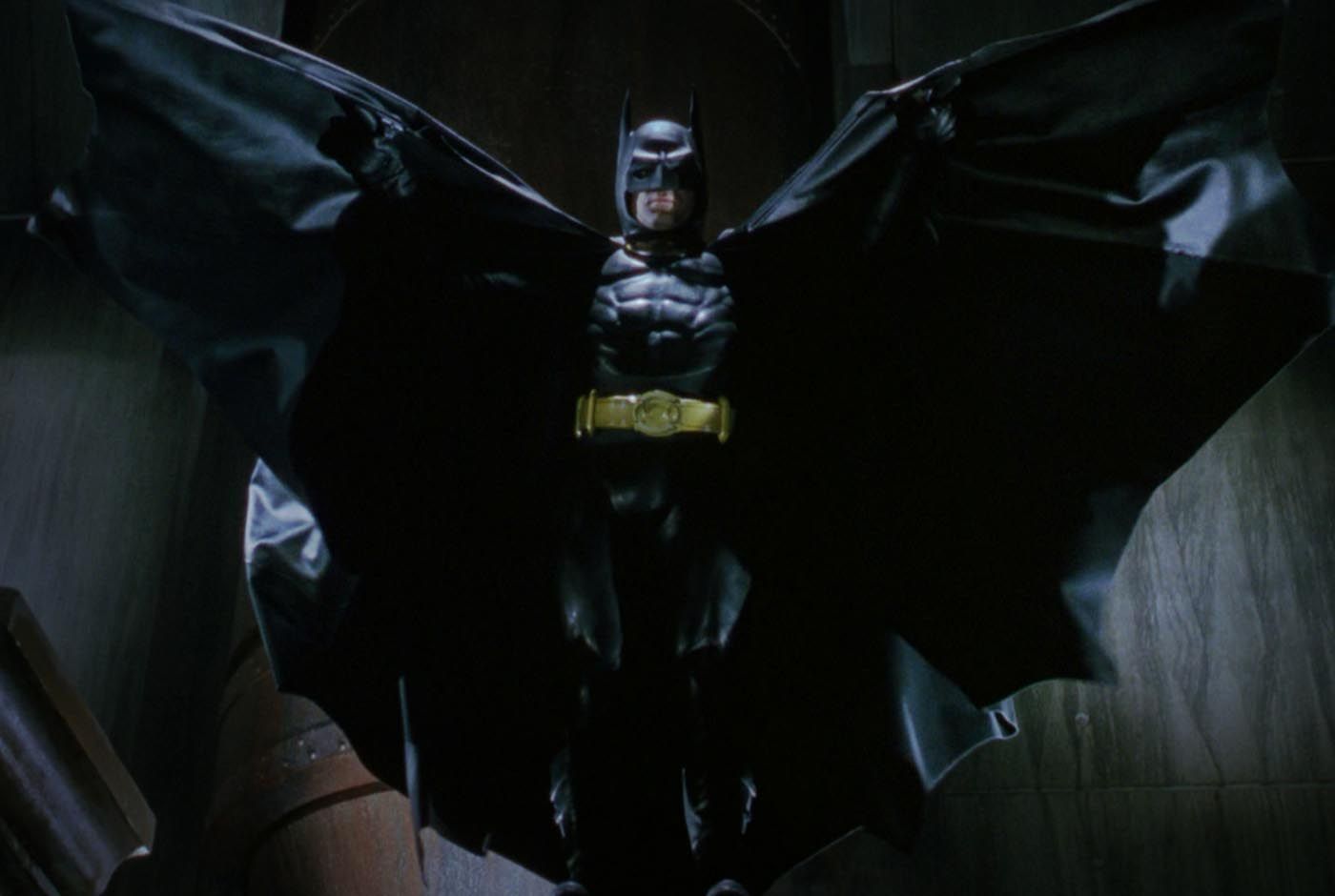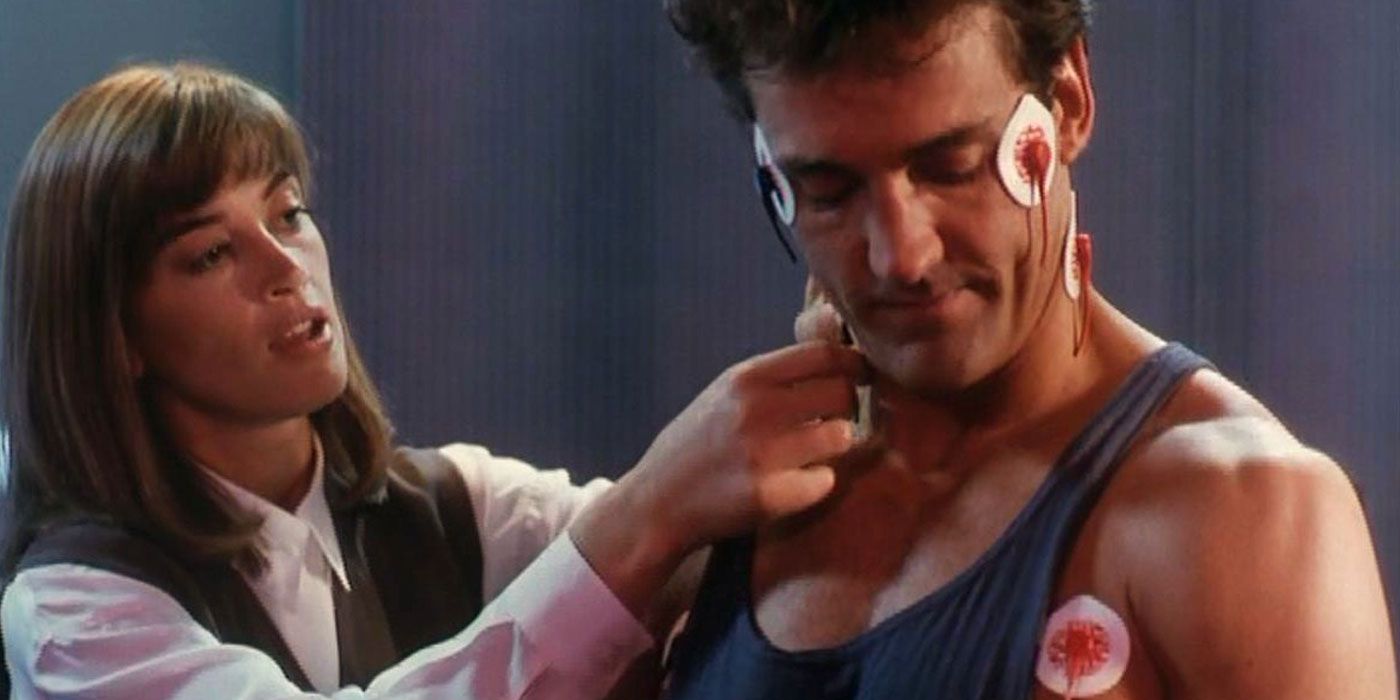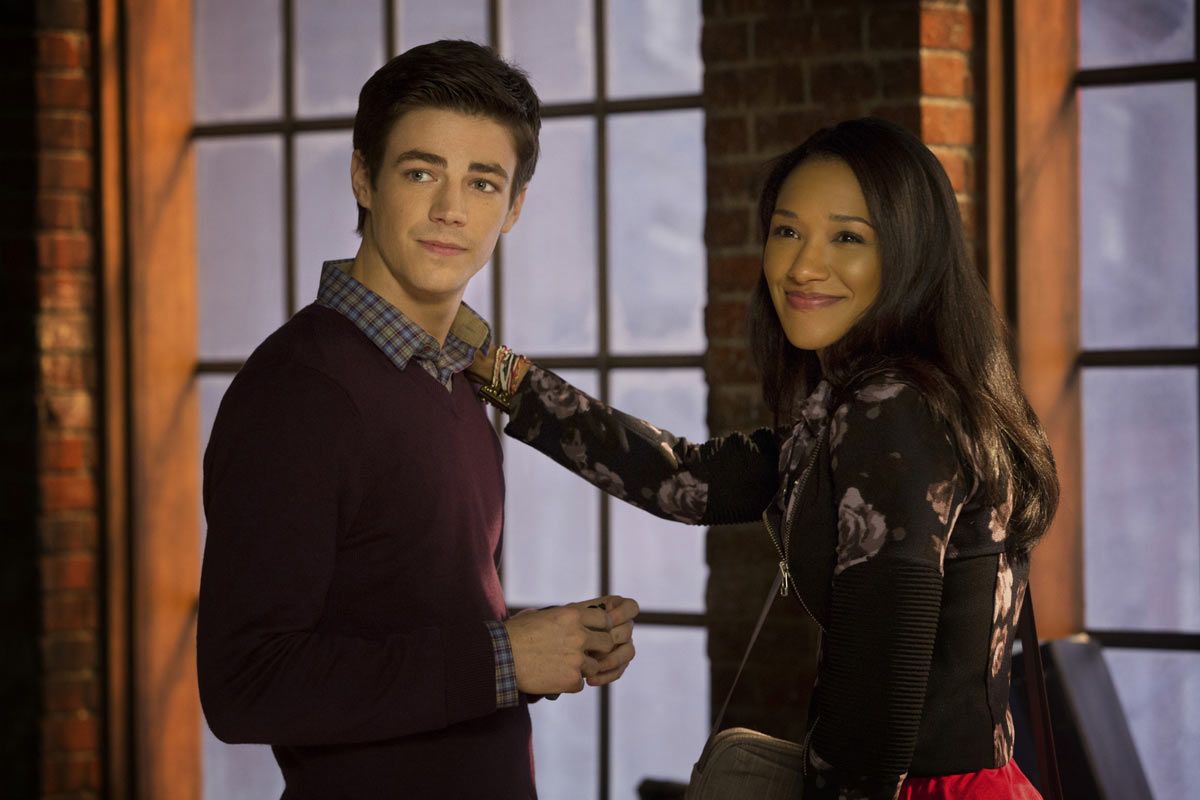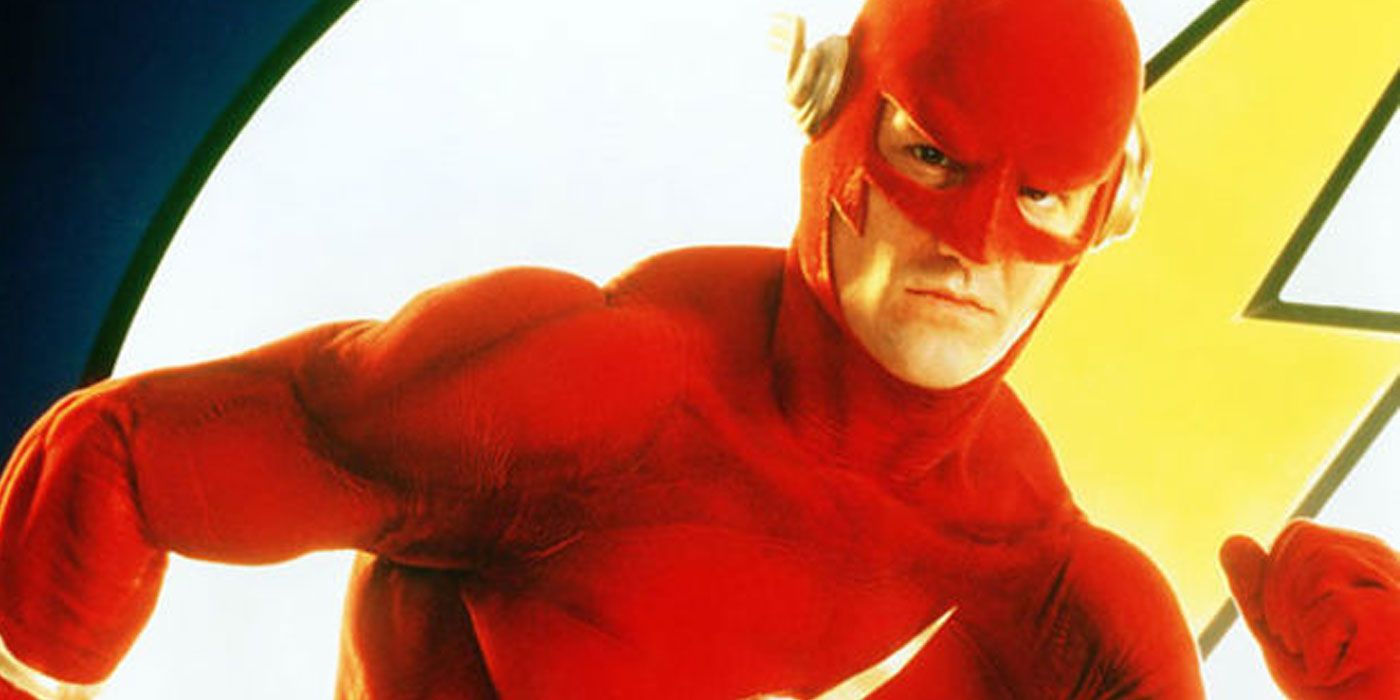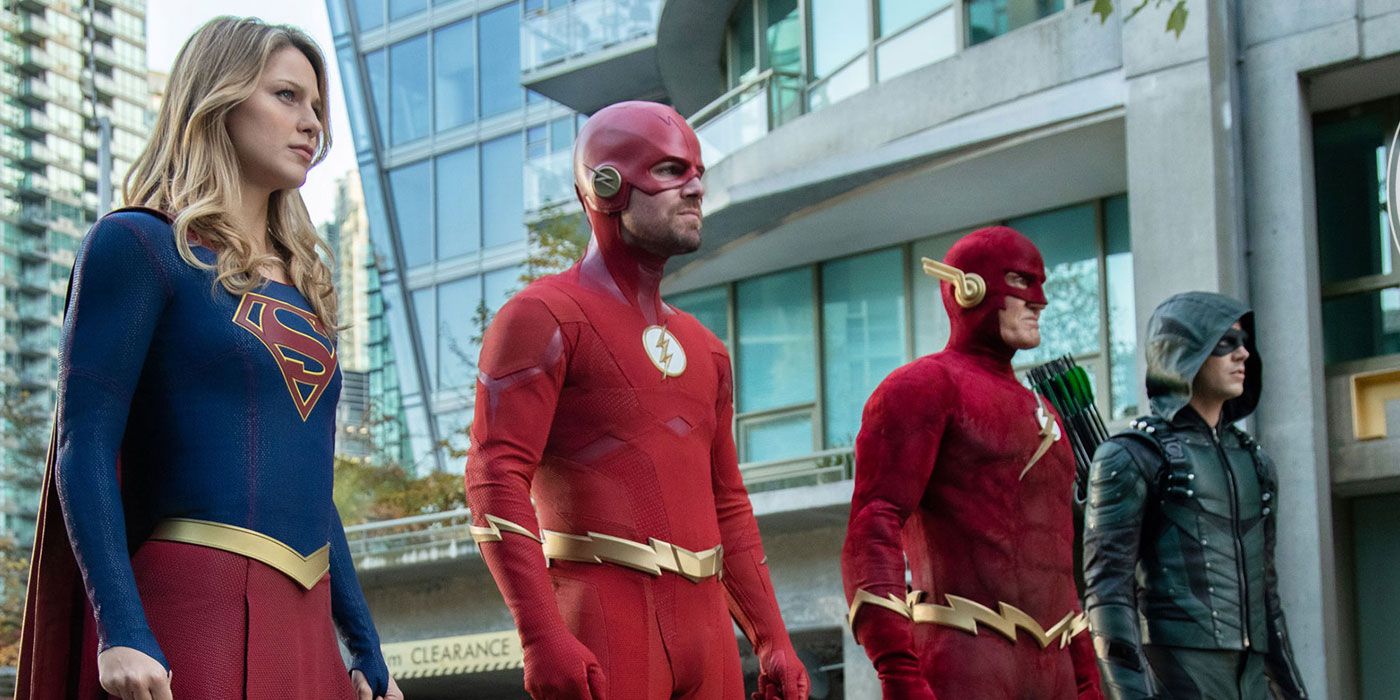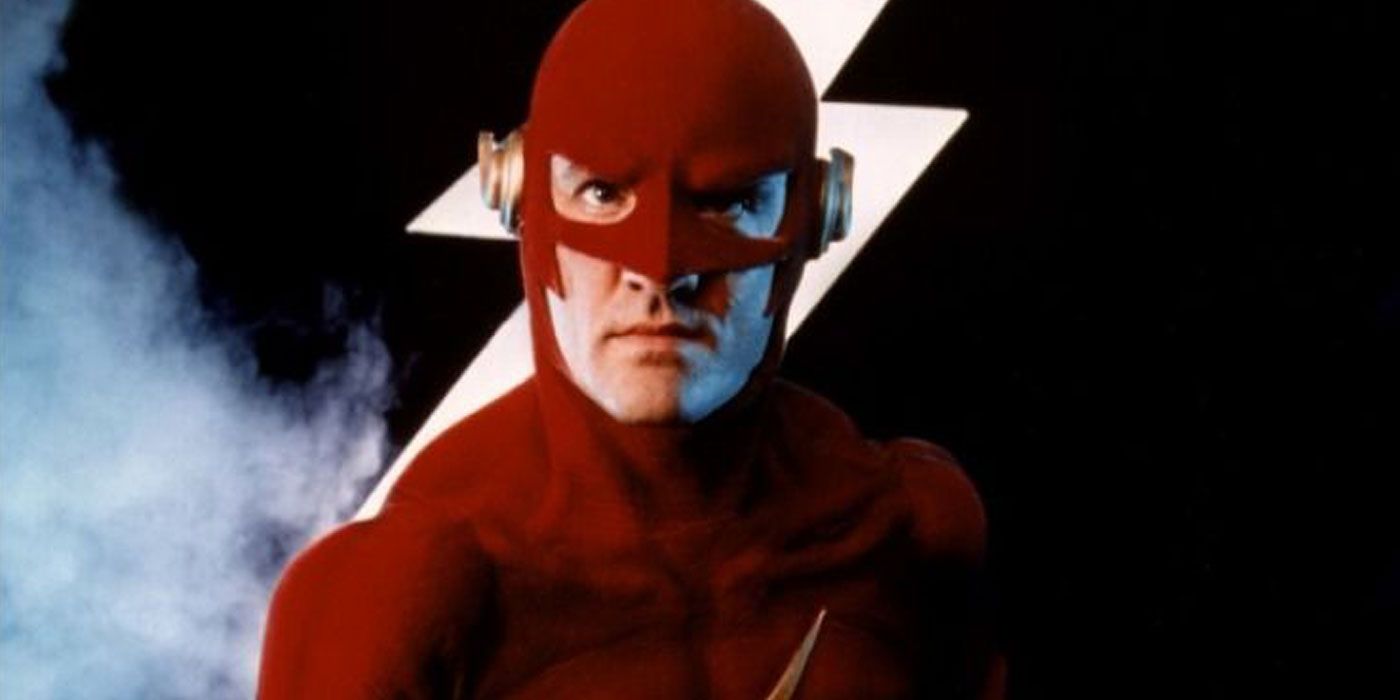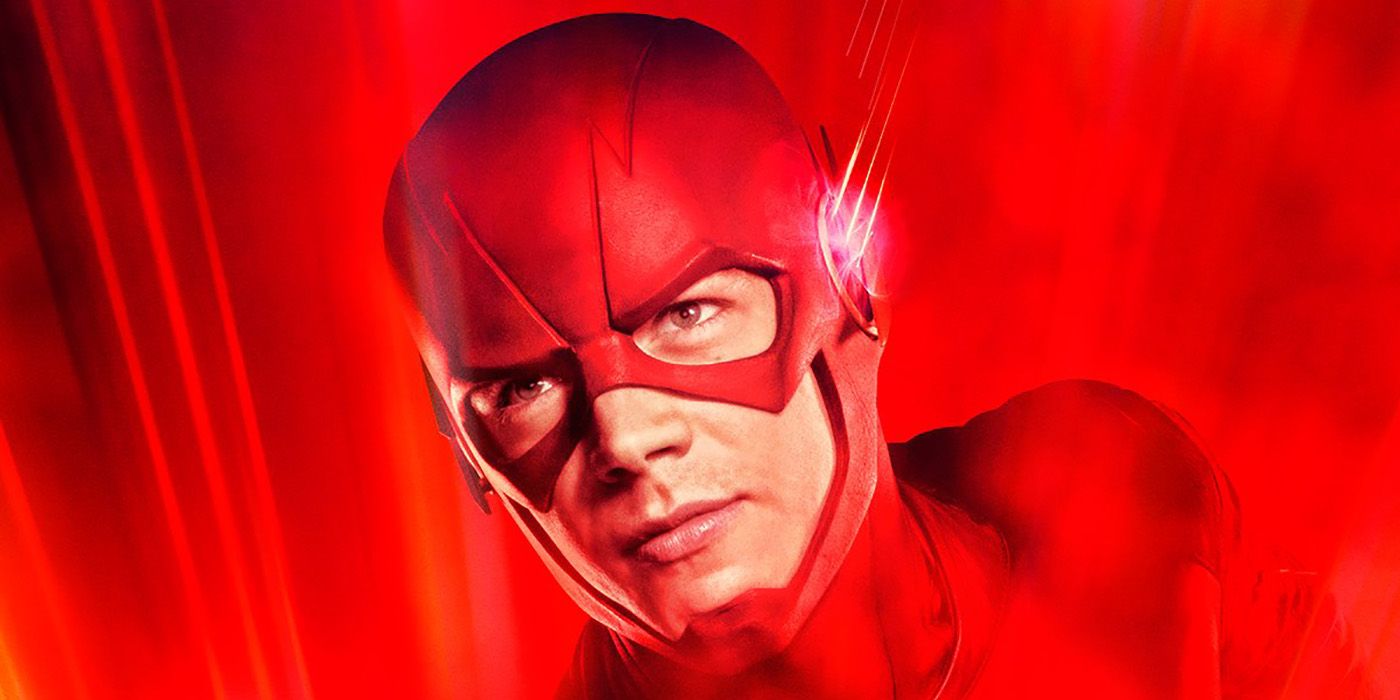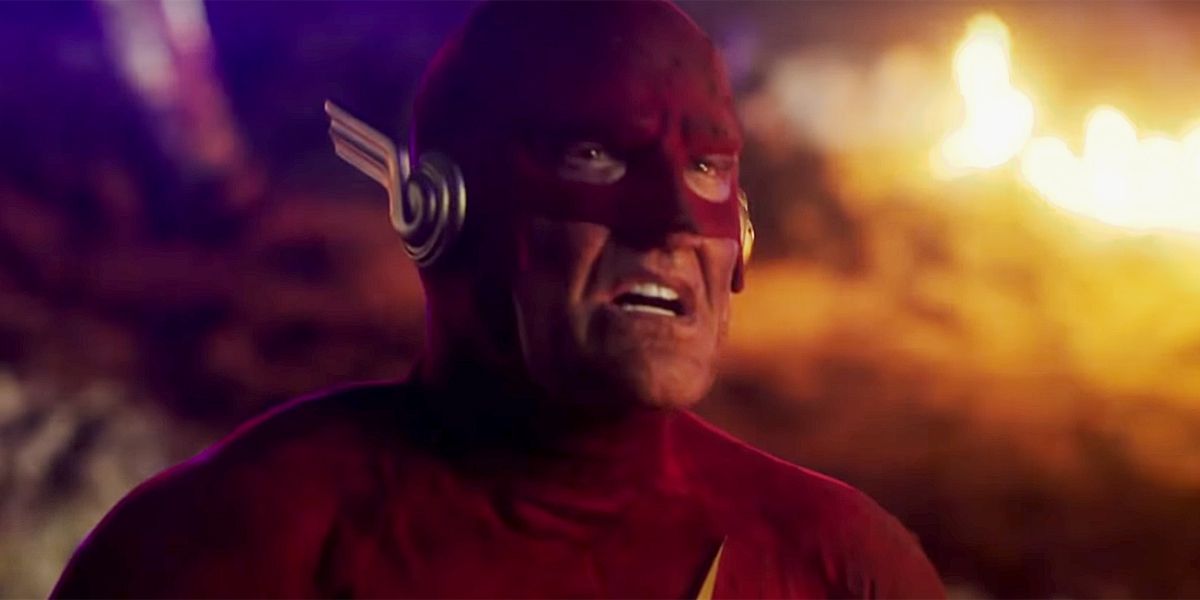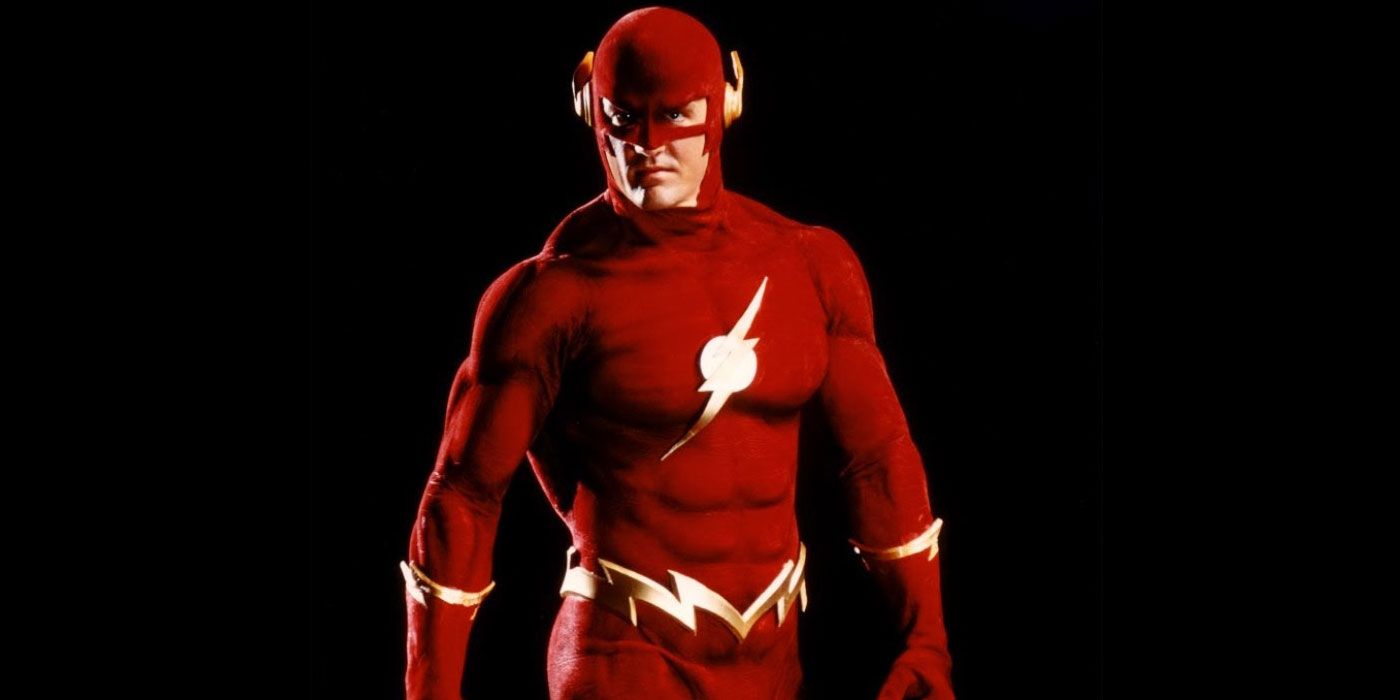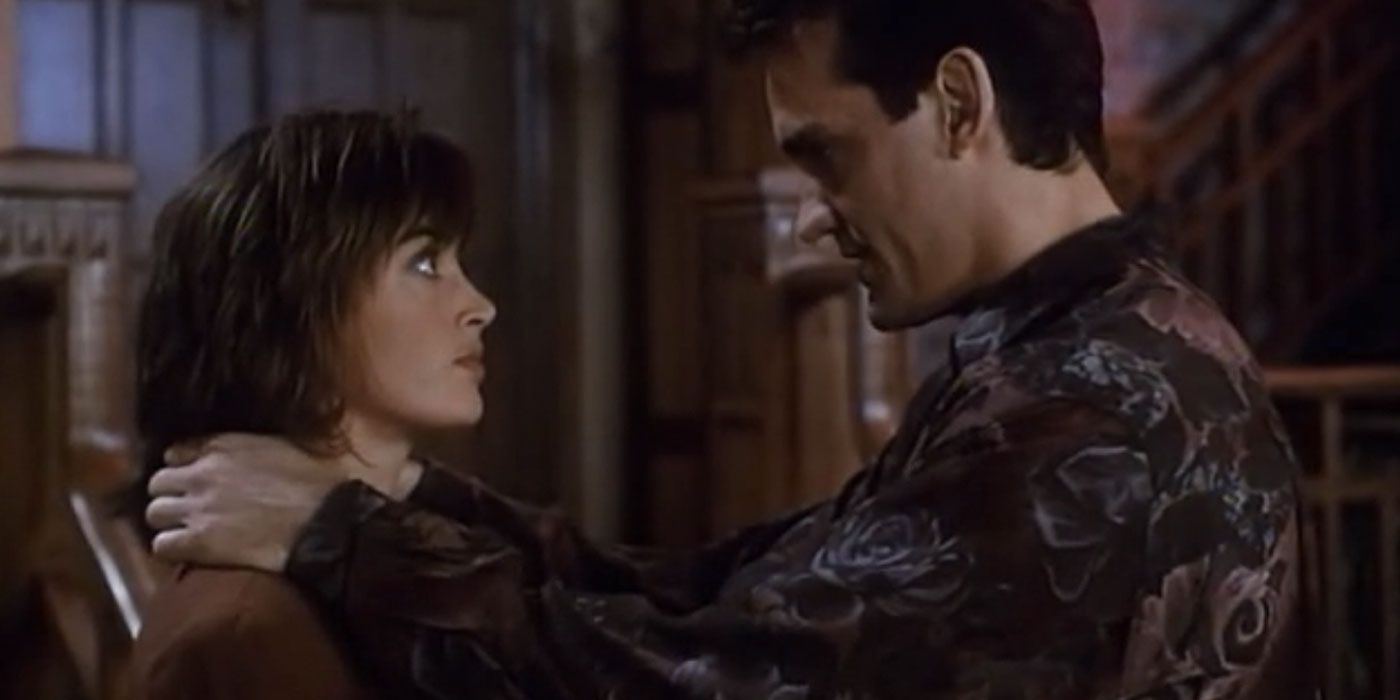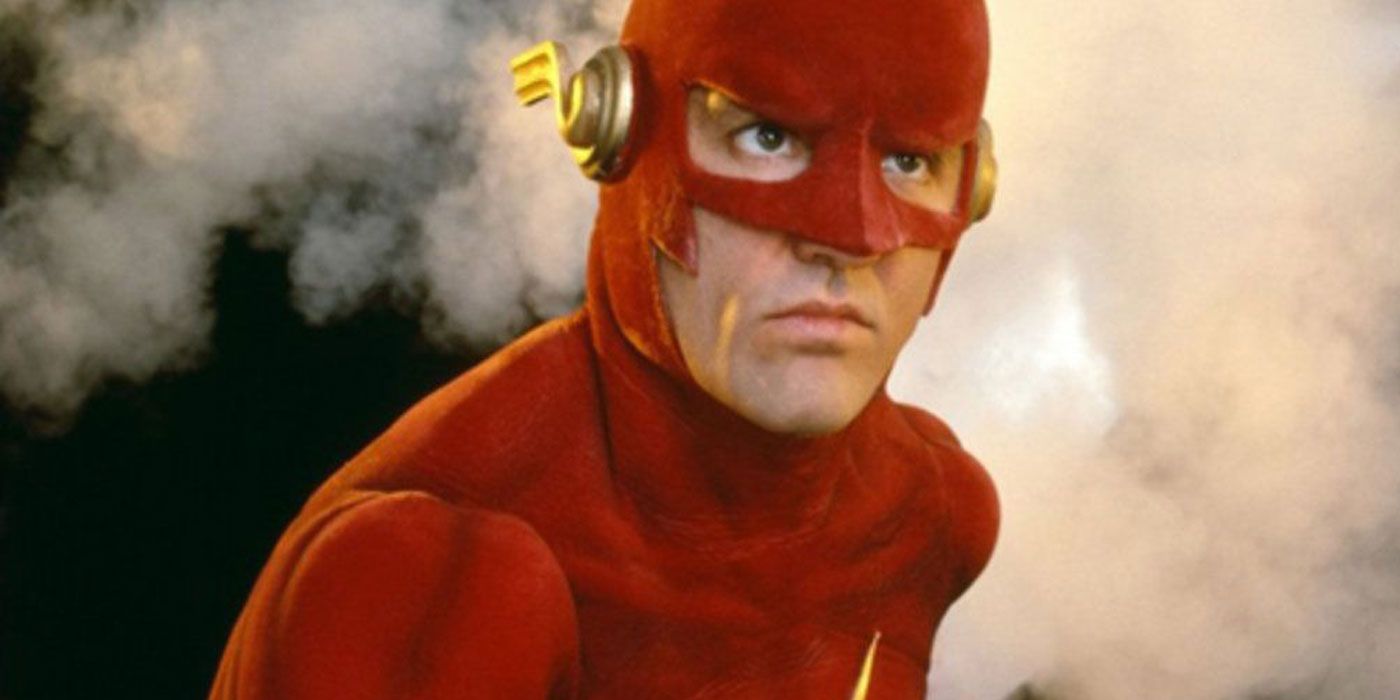Elseworlds has come and gone, and while his appearances may have been few and far between, many fans were excited to see the return of John Wesley Shipp as the Scarlet Speedster himself. The Earth-90 teaser built up plenty of buzz for Elseworlds, as the ‘90s Flash was returning to action, although he tragically was taken out of play before he could even throw a punch or have a conversation with his Earth-1 self. With the return of Shipp on the same show as Grant Gustin's Barry Allen though, something teased since the first jaunt to Earth-2 way back in The Flash's second season, minds are once again turning to the debate of whether the 1990's Flash series is superior to 2014 one.
It seems like a hands down debate, but the 1990 iteration of The Flash is seriously iconic. Released at a time when Batman was lighting up theaters, when Wally West was setting a new standard as The Flash and when comics were about to become a seriously huge deal in the mainstream, The Flash was groundbreaking. Only running for one season of 22 episodes between 1990 and 1991, John Wesley Shipp and Amanda Pays anchored a cast that introduced many young fans to the Scarlet Speedster for the first time. And while Michael Rosenbaum's Justice League animated version would become just as iconic, Shipp's would remain the only live-action depiction of the Flash until Grant Gustin took over the role in 2014 (not counting a canceled JLA pilot). So is the 1990 Flash better than the 2014 version? Well, it can go either way.
20 WORSE: THE ORIGIN
The first episode of The Flash was a two-hour pilot in the form of a made-for-TV movie. The show had Barry overcome a number of issues related to his speed: his enhanced metabolism not only caused him to be constantly hungry, he nearly blacked out.
But that's really it. By the next episode, Barry seems to largely have his powers down and isn't shown learning new abilities. Contrast this with The CW, which spends much of its run focusing not on Barry's speed, but his continued application of it and the various abilities he has obtained through the use of speed powers.
19 BETTER: LESS DRAMA
Barry has a ton of drama on The CW's Flash. There's his early series relationship with Iris, his growing distrust of mentor figures after encounters with Thawne and Zoom, and he is constantly beating himself up over something. Just look at the post-Flashpoint episodes, where Barry somehow managed to turn every conversation into a pity party.
There was still drama and emotion in the ‘90s series but was fairly short-lived. After all, there wasn't a serialized nature to those episodes. The stories would deal with their issues head-on, but then try to get back to light-hearted adventure stories to keep the younger audience hooked.
18 WORSE: BY THE NUMBERS
The Flash was aimed at a younger audience, and the storytelling conventions highlight this. The stories aren't serialized in the slightest, with only returning characters representing the mildest of callbacks to previous episodes. Each episode wraps up its story in a breezy 42 minutes, resetting everyone back to the status quo.
Compare this with the modern storytelling practices on The CW's Flash series. Barry may have an A-plot that he wraps up every episode, but there's a season-long arc as well. Be it chasing the man in the yellow suit or trying to find the identity of the always-intimidating Savitar, The Flash of the modern era had richer, more engaging stories by far.
17 BETTER: THE STORIES
Early ‘90s television was a wild trip. After the bright and whimsical dramas of the ‘80s, media was going darker. The Flash reflected this not just in its story tone, but in its place in the CBS line-up. This was very clearly a DC comic book superhero being produced after the success of Batman.
The superhero aspects of The Flash are significantly toned down, focusing instead on the characters and their relationships. There's still plenty of time for Barry to don his bulky red suit, but at the end of the day, it's about how Barry relates to the world around him, not how his super speed is changing it.
16 WORSE: THE VILLAINS
The CW's Flash has featured many popular members of the infamous Rogues and to varying degrees of success. While many of them have changed appearances over the years, they've at least been recognizably the characters you're told they are. Captain Cold has his cold gun, Captain Boomerang had a number of trick boomerangs and so forth.
The Flash of the ‘90s avoided Rogues on many occasions. Typically the villain of the week was someone more grounded, as it was a "year one" take on the character. Fairly poorly depicted in terms of villains, the only real memorable Rogue to appear would be Mark Hamill's Trickster, a role which even The CW's Flash used.
15 BETTER: THE EFFECTS
Don't be mistaken, this isn't a knock on the look of the modern Flash series' effects. A lot has improved since the ‘90s, and it's easier than ever to make a man run at the speed of sound and make it look pretty good, too.
But there's something missing from the entirely CGI Grant Gustin, and that's the sense of realism. It's fully in the uncanny valley, and that was an issue the' 90s Flash didn't have. Sure, it was because CG hadn't reached the point you could do a digital John Wesley Shipp, but the effects for the show have still aged relatively well and lends to how well the series holds up today.
14 WORSE: NO RIVALRIES
The single episode nature of The Flash's stories and the lack of follow-up seasons meant Barry Allen was missing one critical component of The Flash: rivals. Though Mark Hamill's Trickster made repeat appearances, there are no true rivals to really test The Flash time and time again, and the end result is he's never pushed to that next level.
There's no proper incarnation of the Reverse Flash, or Savitar, or any of the classic Flash villains who have historically led to Barry making new discoveries about his abilities. The end result is that Barry finds himself never really moving beyond where he is in the show's first episode.
13 BETTER: IT'S OWN UNIVERSE
The shared universe of The CW's The Flash is a blessing and a curse. It's pretty cool to see The Flash run around with Green Arrow or Supergirl, but it also means you have to do your dues to honor what is happening on those shows.
CBS' The Flash managed to avoid this by virtue of being the only game in town at the time. Set in its own self-contained Central City, there were no other plots to worry about. No massive wars in Central City, or time travel hijinks with the Legends. The stories were able to stay laser focused and tightly written for the duration of the series.
12 WORSE: THE BURTON EFFECT
In 1989, comic book movies were changed forever with the release of Tim Burton's Batman. The movie had its fair share of tribulations on its way to the big screen and was nearly a very, very different movie. But with Burton's gothic direction, an iconic soundtrack with instrumentals from Danny Elfman and tracks from Prince and a gripping retelling of the origin, Batman redefined superheroes.
This trickled down to The Flash. The typically bright and welcoming Central City looks like the grimy and unforgiving Gotham City. The score definitely takes a few notes from Elfman's Batman music. The Burton relation to The Flash defined it but ultimately meant the character felt more like Batman than The Flash, for better or for worse.
11 BETTER: THE EVERYMAN
John Wesley Shipp's Barry Allen is relatable as hell. As a Central City forensic scientist, he's regarded as one of the best in his field. But he's not considered so good that he's allowed to get away with anything. And when he gets super speed, it doesn't help his personal life at all.
It starts with Iris, who definitely takes notice of Barry's many disappearances and odd behaviors to the point she leaves him. His parents love him, but don't really get him, with his father looking down his nose at Barry's CSI job. Unlike modern Barry, the super speed didn't really help ‘90s Barry at all and made his life infinitely more difficult.
10 WORSE: NO IRIS
Since Barry Allen first debuted in the comics, his true love has typically remained Iris West. The two would marry in the comics before her tragic passing. Shortly before Barry's own end in Crisis on Infinite Earths, it would be revealed she was actually from the future in a plot twist that's best not thought about.
Despite the oddities of the story, where there was Barry Allen there was inevitably Iris West. Not so on The Flash though. Iris would appear in the show's pilot before being written out of the series, breaking up with Barry and leaving for France. Speculation is she would have returned as a major Season 2 character, but this was never confirmed.
9 BETTER: THE TIMING
In an era post-Batman, The Flash proved a tremendous success as the biggest (and only) superhero show on television. The world was still a few years removed from Lois & Clark airing, and the last live-action superhero show to air would have been The Adventures of Superboy.
The Flash cashed in on Bat-mania in a big way, adopting a moodier tone and creating a Barry who relied on fear and theatrics. Ratings-wise, The Flash did well enough and was poised to tackle heavy-hitter The Cosby Show. But the high per-episode costs and FOX's decision to move The Simpsons cut the legs out from under The Flash before it could really get up to speed.
8 WORSE: A LONELY WORLD
The real appeal of The CW's Flash is in the Arrowverse. While it's cool to see The Flash stand on his own, you want to see superheroes interact with other superheroes. The Flash of the ‘90s suffered in this regard, given that there was no other superhero show around.
Superheroes were largely in movies at the time, and The Flash wouldn't have a TV compatriot, with Lois & Clark: The New Adventures of Superman not arriving until a few years later. Though there is a Batman movie poster and a Superman costume at Halloween party, it's never actually confirmed if there are other superheroes in the world of The Flash.
7 BETTER: THE MUSIC
Let's be real, the music for the Arrowverse is okay at best. Sure, you recognize quite a few of the songs. Arrow and The Flash both have notable themes. And the triumphant flourish of Supergirl's main titles will absolutely be stuck in your head now that you're thinking about them.
But for the ‘90s Flash, the theme followed the rest of the show's suit with a theme from Danny Elfman, at the time riding high off his iconic Batman theme. While Elfman only scored the theme (Batman: The Animated Series' Shirley Walker would score the rest of the series) the music for The Flash is something fondly remembered even today.
6 WORSE: THE TIMESLOT
Since 2014, The Flash has aired consistently on Tuesdays at 8 PM. This has lent a lot to the success of the show, as it becomes a Tuesday night tradition for many viewers. Though the schedule does regularly takes breaks for a variety of reasons (elections tend to stop The Flash faster than any Rogue has), it's continued to air reliably.
The ‘90s Flash had no such luck. The announced Thursday 8 PM slot was designed to go against The Cosby Show, but they didn't anticipate FOX moving The Simpsons to the same time slot. Between trying to beat The Simpsons and accommodating Gulf War coverage, The Flash constantly changed timeslots, even shifting to Sundays before quietly ending.
5 BETTER: THE ORIGINAL
It's hard to imagine doing another series like The Flash's 1990 season today. When The CW aired their iteration of the character starting in 2014, it was the polar opposite. Gone was the dour, dreary set design and bulky, flashy costume. In was the bright streets of Central City, a sense of hope and a more functional, athletic costume design.
But this is largely due to the prevalence of comic books in recent years. When The Flash aired in 1990, comics hadn't yet gone through their massive popularity boom, and they were allowed to have more freedom with story elements. Part of what makes The Flash so endearing and memorable is it's the unique tone in the legacy of the character, allowing it to stand out.
4 WORSE: THE SCALE
The scale of the ‘90s Flash is much, much smaller. Some of this is by design of timing. Of course there's no Speed Force introduced during the show, that hadn't even been created in the comics yet. Barry also never really grows beyond his abilities, with the wildest thing he encounters being a single incident of time travel.
This is another side-effect of the state of superhero media at the time. A lot of characters, especially DC's characters, were being presented in more grounded and realistic depictions. The result was The Flash, with incredible speed and endless potential, stopping a lot of street-level crime on a weekly basis.
3 BETTER: THE SUIT
Let's not kid ourselves: the costume worn by John Wesley Shipp on The Flash is absolutely iconic. So iconic that the suit appeared in Elseworlds crossover largely unchanged. The suit was made of latex but treated to appear like a standard unitard.
Unlike the modern incarnations of the character, Shipp's Allen is meant to appear to be wearing a comic book accurate, single-piece body suit. The suit was pretty tough to move around in though, and a second, leaner design appears near the end of the season. This suit was easier to move in but lacked a lot of the amazing details of the original. This design looks to be the one used for the Elseworlds crossover.
2 WORSE: THE END
There was a lot of will they/won't they with Barry and his close friend, Star Labs scientist Tina McGee. There are other small implications too, such as the slowly appearing members of The Rogues, an alternate future where an escaped Pike took over Central City. And Central City was just starting to come around on The Flash.
But what happened next? We never get a chance to find out. The Flash ended with Barry turning down an offer to move to San Francisco, and we know a second season was going to open with The Rogues finally forming proper. The most tragic thing The Flash ever did was end before it could truly embrace its comic book roots.
1 BETTER: THE LEGACY
The Flash only lasted for one season of 22 episodes, and that was pretty much it. A comic book special was published with two original stories, but that was the last time Shipp's Flash was seen until his much-hyped return in Elseworlds.
Despite this, the show has remained an iconic bit of pop culture. It was airing just as comic books were preparing to through a mainstream explosion in popularity. Many fans of the show were teens and children who had never experienced The Flash before, making this their first interaction with the character. The end result is a truly iconic childhood connection that created a huge fan-following for DC's Scarlet Speedster.

